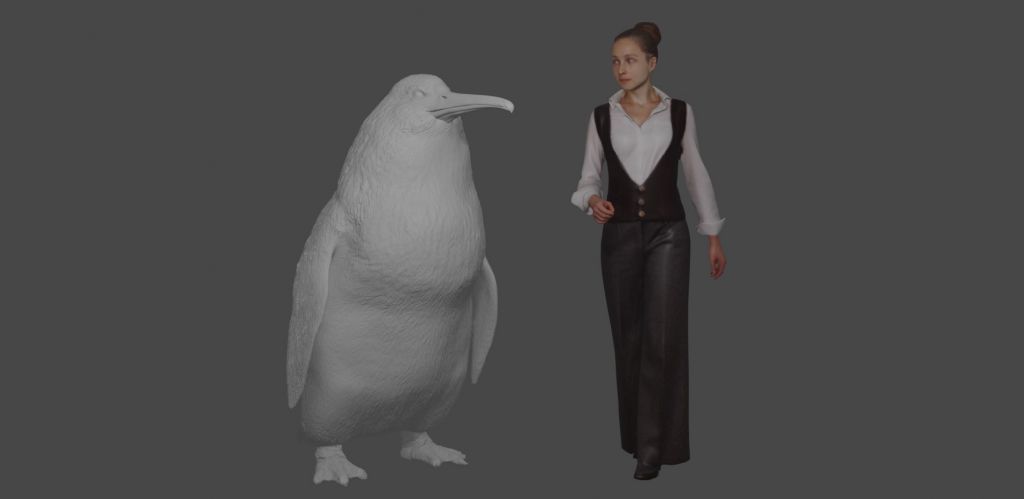Create a free profile to get unlimited access to exclusive videos, sweepstakes, and more!
This five-foot monster penguin once waddled the wilds of ancient New Zealand

With all the social and political strife running rampant in the world today we can at least take some comfort in the fact that monster five-foot-tall penguins are not patrolling our planet like this newly discovered species in New Zealand.
Leigh Love, an amateur paleontologist and study co-researcher, discovered the large fossilized leg bones of this newfound penguin last year in the town of Waipara in Canterbury, New Zealand, an area known to be a treasure trove of giant prehistoric animals. Scientists have officially named this human-sized specimen Crossvallia waiparensis, and it's now known to be the second-largest ancient penguin ever unearthed.
This behemoth flightless bird existed during the Paleocene Epoch, 56-66 million years ago, and can now be added to the roster of super-sized extinct creatures of primeval New Zealand, like the world's largest parrot, an enormous eagle, and a massive burrowing bat. It once stood at 5.3 feet tall (the same height as an average human woman) and tipped the scales at a hefty 176 pounds.
This incredible new study was published Aug. 12 in the online journal Alcheringa: An Australasian Journal of Palaeontology. After examining and identifying the fossils, the team, composed of Canterbury Museum curators Dr. Paul Scofield and Dr. Vanesa De Pietri and Dr. Gerald Mayr of Senckenberg Natural History Museum in Frankfurt, Germany, concluded that they belonged to a previously unknown penguin species closely related to Crossvallia unienwillia. That smaller extinct species was identified from a fossilized partial skeleton discovered back in 2000 in the Cross Valley in Antarctica, which was once connected to New Zealand in the Paleocene.
According to Scofield, curator of Natural History at Canterbury Museum in New Zealand, when these XL-sized Crossvallia species were alive, New Zealand and Antarctica were very different than today. Antarctica was blanketed in forest, and both regions had much more temperate climates. With most all mega marine predators gone following the mass extinction of dinosaurs, it appears that there was ample evolutionary opportunity for penguins to flourish and grow in jumbo sizes.
"The discovery of the giant Penguin Crossvallia waiparensis shows us that bird evolution in the period shortly after the extinction of the terrestrial non-avian dinosaurs and the giant marine reptiles was extraordinarily fast and produced some bizarre and amazing experiments," Dr. Scofield tells SYFY WIRE. "Importantly this fossil links the faunas of New Zealand and Antarctica at this crucial moment in history making us realise how important Antarctic was in allowing birds and other animals to survive after the cataclysm at the end of the age of the dinosaurs."
By comparison, a modern emperor penguin only rises to a maximum height of 3.9 feet, so this newfound marine animal would have towered above it. The gigantic bird's fossils, along with those of other monster penguins, will go on display in an exhibit highlighting prehistoric New Zealand at Canterbury Museum sometime toward the end of 2019.




























